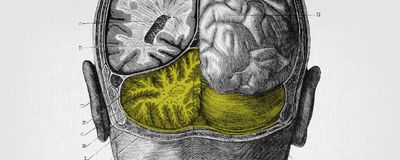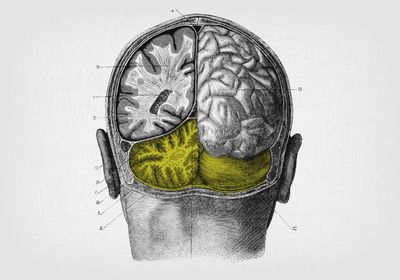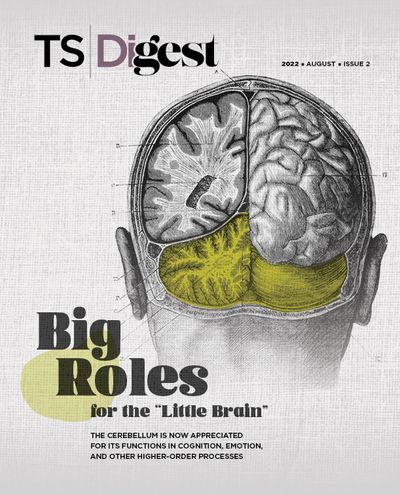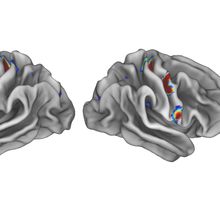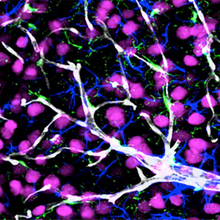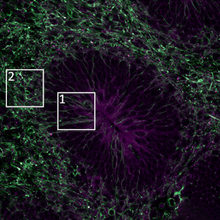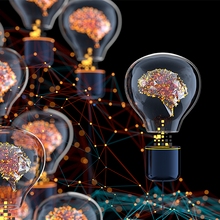ABOVE: modified from © istock.com, Vladi333
As a physician for the British Army during World War I, neurologist Gordon Holmes encountered many soldiers who had suffered gunshot wounds to the head. While caring for these unfortunate individuals, Holmes observed that damage to a small structure at the base of the brain called the cerebellum, which means “little brain” in Latin, primarily led to problems in coordinating movements. Holmes described these cases in a seminal 1917 paper in the journal Brain, where he called the cerebellum a “motor reinforcing organ.”1 Rather than directly producing movements, he explained that the cerebellum “sets” or “tunes” them to ensure that they were “immediate, effective, and proportional to the intensity of the cerebral impulse.” In other words, the cerebellum helped orchestrate the motor commands from the cerebral cortex, the baseball glove–shaped structure that makes up most of the human brain and the organ’s master conductor.
Holmes’s reports corroborated what other scientists had documented nearly a century earlier. In the early 1800s, French physiologist Marie-Jean-Pierre Flourens removed the cerebellums from pigeons and observed the animals stumbling around as if intoxicated. He, like Holmes, noted that the cerebellum was the seat of motor coordination in the brain. “For the past 100 years, that’s been kind of a textbook view of what the cerebellum is good for,” says Michael Hausser, a neuroscientist at University College London in the UK. But now, he adds, “we need to rewrite the textbooks.”
Beginning around the 1980s, scientists began to wonder whether the cerebellum’s roles might extend beyond its motor-related reputation. Starting with a handful of cases in which patients with cerebellar damage exhibited nonmotor defects, such as difficulties using cues to plan their actions, this once-radical hypothesis has gained ample support from research over the past several decades in both human patients and animals. Evidence has steadily been building for the role of the cerebellum in a broad spectrum of functions, including cognition, emotional processing, and social behavior. This work has also pointed to the potential importance of the cerebellum in a range of neuropsychiatric disorders, such as autism and schizophrenia. In recent years, scientists not only have continued to uncover new roles for the cerebellum but have begun to map the circuits that mediate the brain region’s nonmotor roles.
“This view that the cerebellum is only involved in motor behaviors is incorrect,” says Hausser. “The cerebellum has a much richer and more interesting role in driving behavior.”
Beyond movement
For Henrietta Leiner, a neuroscientist working in the 1980s and initially trained in mathematics, physics, and computer science, it was the cerebellum’s large size in humans compared with other animals that made her question whether its role was exclusively confined to motor functions. The surface area of the human cerebellum, with its tightly wound folds, is a whopping 80 percent of that of the cerebral cortex. In 1986, before this fact was established, Leiner and her colleagues published a paper proposing that the most recently evolved parts of the cerebellum contributed to higher-level mental functions, thus enabling “mental dexterity” in addition to the “motor dexterity” the “little brain” was already known for.
In fact, hints that damage to the cerebellum might lead to nonmotor consequences had emerged as early as the 1800s. In the 1980s, Jeremy Schmahmann, then a neurology resident at Boston City Hospital, was unearthing clinical reports dating back nearly 200 years that described potential intellectual, social, and emotional dysfunction in individuals with damaged—or absent—cerebellums. Intrigued, Schmahmann decided to dig deeper through research of his own.
We need to rewrite the textbooks. This view that the cerebellum is only involved in motor behaviors is incorrect.
—Michael Hausser, University College London
After becoming a neurologist at Massachusetts General Hospital, Schmahmann made a series of observations of individuals with cerebellums damaged by tumor growth, strokes, or other incidents. In 1998, he and his colleague Janet Sherman published the first description of so-called cerebellar cognitive affective syndrome, a constellation of cognitive and behavioral impairments such as problems with abstract reasoning and emotional control. This condition, which some now refer to as Schmahmann’s syndrome, helped establish an appreciation of the cerebellum’s role beyond coordinating movement, Hausser says.
Other early clues for the cerebellum’s wide-ranging functional repertoire came from studies implicating the brain region’s contributions to neuropsychiatric disorders, particularly schizophrenia and autism. For both conditions, research dating back decades has documented evidence of anatomical abnormalities within the cerebellum. These clinical observations jibed with the work of Schmahmann and others back in the 1990s, when they identified anatomical connections in the brains of monkeys that linked the cerebellum with parts of the cerebral cortex involved in memory, attention, and other high-order functions. Years later, in 2009, neuroscientists using functional magnetic resonance imaging in humans found that the cerebellum was activated during tasks involving language, memory, and emotional processing. This work also showed that in most of the cerebellum, neural activity was in sync with that of regions of the cerebral cortex responsible for these nonmotor functions.
Together, these findings indicated that the cerebellum was potentially involved in a multitude of functions, and that pathways linked the cerebellum to the cerebral cortex, providing a putative neural infrastructure for this functionality. What was still missing was the mechanism—the details of how and when we need the cerebellum for high-order processes such as cognition, says Catherine Stoodley, professor of psychology at American University. “There’s a lot of interest from the experimental side where researchers are saying, ‘Okay, we’re buying the idea now that the cerebellum is involved in cognition—but what is it doing?’”
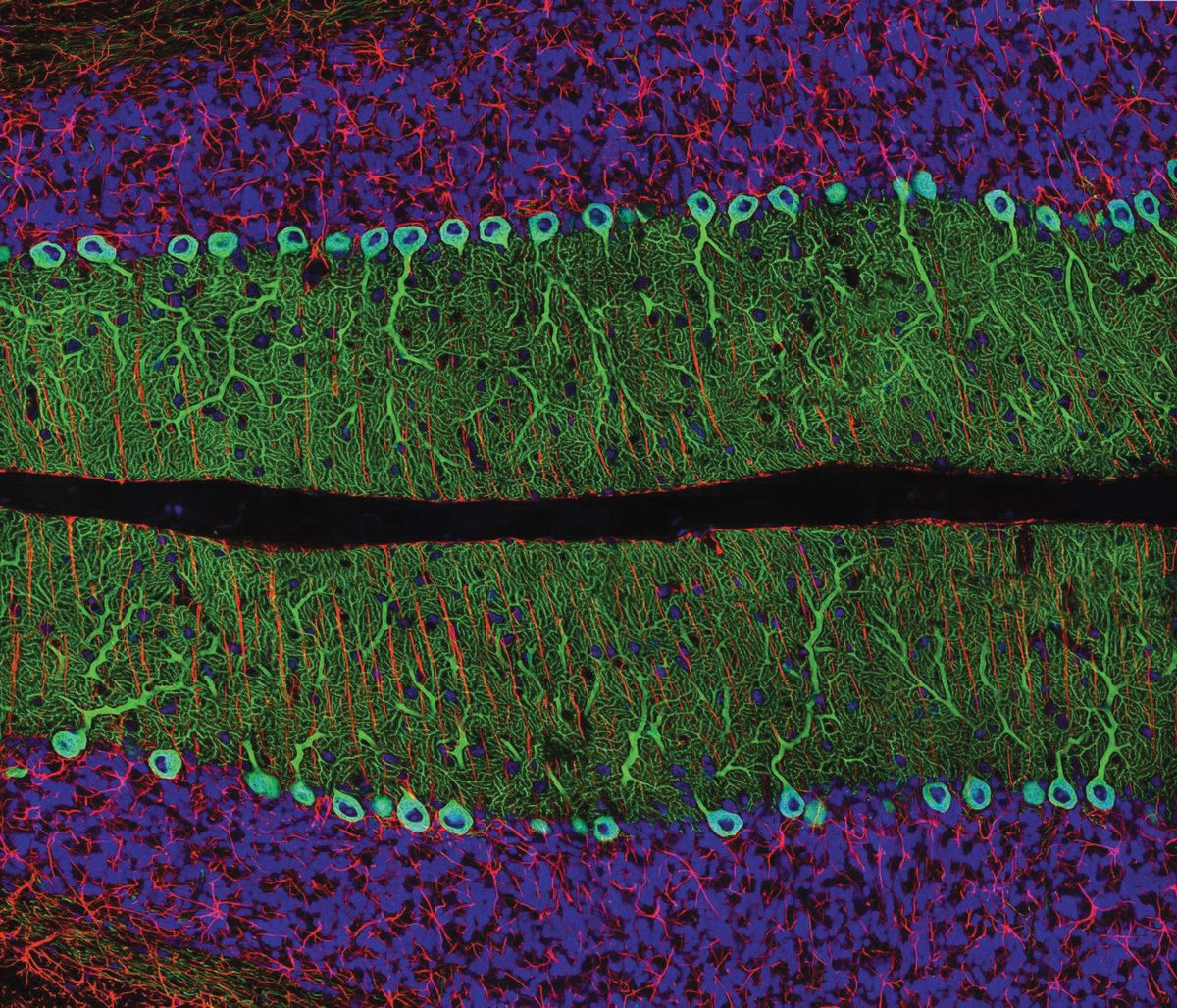
Mapping circuits
Chris De Zeeuw at the Netherlands Institute for Neuroscience and colleagues were tracking the activity within cerebellar neurons when they discovered that the cerebellum was critically involved in the process of making decisions in mice—at least when it comes to very basic behaviors. The researchers had trained the rodents to learn that the position of a small metal pin indicated which one of two spouts they needed to lick to receive a sugary treat. By recording neuronal activity while the animals carried out this task, the team found that neurons within the cerebellum were active between the start of the task and the licking action—the period when planning occurs.
The researchers traced a circuit between the cerebellum and the cerebral cortex that was responsible for carrying out this behavior. And when they optogenetically interrupted this neuronal activity, they saw that the mice made more errors. Since publishing these findings in 2018, the group has conducted similar experiments using nonhuman primates, De Zeeuw says. “There too, we get the impression that the cerebellum may contribute to some cognitive processes.”
From a developmental perspective, [the cerebellum] is a particularly interesting part of the brain.
—Catherine Stoodley, American University
In parallel, several studies have suggested that the cerebellum might specifically play a role in processing reward-related signals. Hausser and colleagues reported in 2019 that when mice are given the simple task of moving a virtual object toward a target on a screen for a food reward, the cells of the cerebellum showed the largest signal not when the animal made the movement, but when it received the treat. Around the same time, several other labs reported similar reward-related signals lighting up the cerebellums of animals carrying out different types of behavioral tasks. “There was this kind of amazing near-simultaneous discovering, which really kind of turned the field upside down,” Hausser says. “It showed that the cerebellum is getting reward information all the time.”
This work on reward-associated activity in the cerebellum is “very exciting,” says Abigail Person, a neuroscientist at the University of Colorado who was not involved in these studies. While she notes that the line between motor and nonmotor activity is not exactly clear-cut—especially in rodents—the delay between stimulus and action “gets us away from real-time controlled movement into more longer-term planning of movement.”
Another 2019 study on the cerebellum’s role in reward-related processes came from neuroscientist Kamran Khodakhah and his group at the Albert Einstein College of Medicine in New York City. In their study, the researchers uncovered evidence of a possible connection between the cerebellum and autism. They discovered a pathway directly linking the murine cerebellum to the ventral tegmental area, a reward-processing center in the midbrain, and found that deactivating this pathway made mice less likely to socialize with other animals. This supported findings from years earlier, when University of Texas Southwestern Medical Center neurologist Peter Tsai and colleagues generated a mouse model of autism by disrupting a key gene in Purkinje cells, a major cell type in the cerebellum. Animals with this alteration exhibited characteristics that mirrored those seen in some humans with autism, such as a lack of interest in social interactions with novel animals, inflexible thinking, and repetitive behaviors. In a follow-up study, Tsai, Stoodley, and colleagues demonstrated that social deficits in mouse models of autism could be ameliorated by chemically stimulating the cerebellum.
These links with autism highlight another unique quality of the cerebellum: its sensitivity during development. Unlike the cerebral cortex, which seems to be able to adapt quite well to lesions—particularly those incurred early in development—there are hints from the clinical literature that the cerebellum might not be so adaptable, says Stoodley. In addition, cerebellar disturbances in early life have been linked to autism. Researchers have reported, for example, that damage to the cerebellum at birth greatly increases a child’s chances of developing the condition. And in 2018, Princeton University neuroscientist Sam Wang and colleagues reported that manipulating neural circuits in the posterior cerebellum within the first few weeks of life in young mice led to autism-like traits, but the same effects were not seen in mice that underwent the procedure as adults.
“From a developmental perspective, [the cerebellum] is a particularly interesting part of the brain,” Stoodley says.
THE CEREBELLUM’S MANY ROLESThe cerebellum is a fist-size structure tucked below the cerebral cortex—the part of the brain that we typically attribute to higher-order cognitive processes, including consciousness, language, and memory. Although the cerebellum was traditionally viewed as a center devoted solely to motor coordination, a growing body of research indicates that the structure is also involved in cognition, emotion, and other functions. 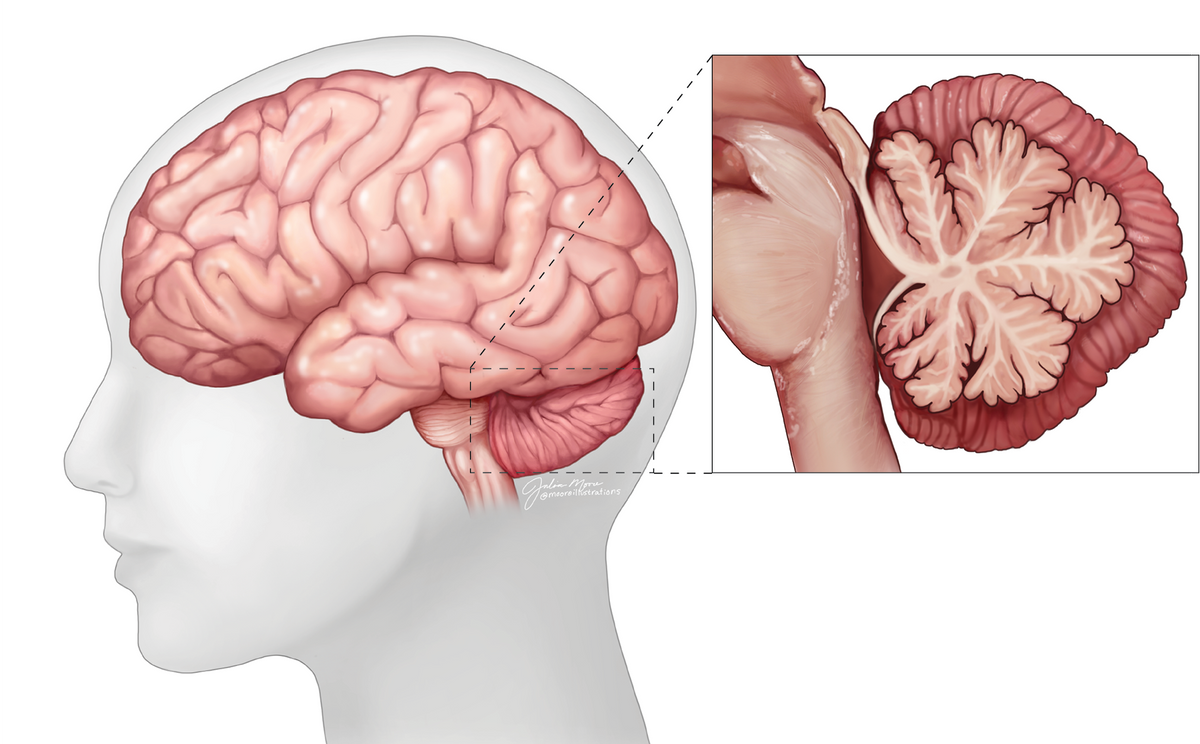 Although the cerebellum appears small from the outside, the structure’s many coral-like branches give it a surface area that is 80 percent of the surface area of the larger cerebral cortex. | |
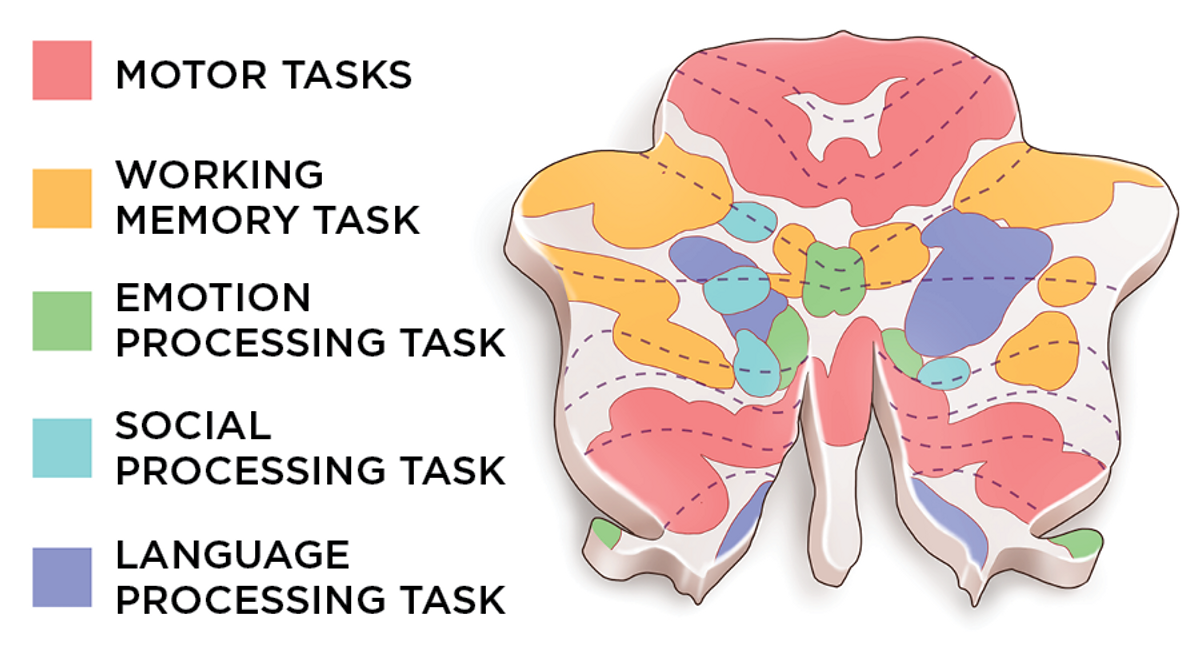 | Functional MRI studies suggest that the cerebellum can be divided into specific regions linked specifically to motor, cognitive, and emotion-related functions. |
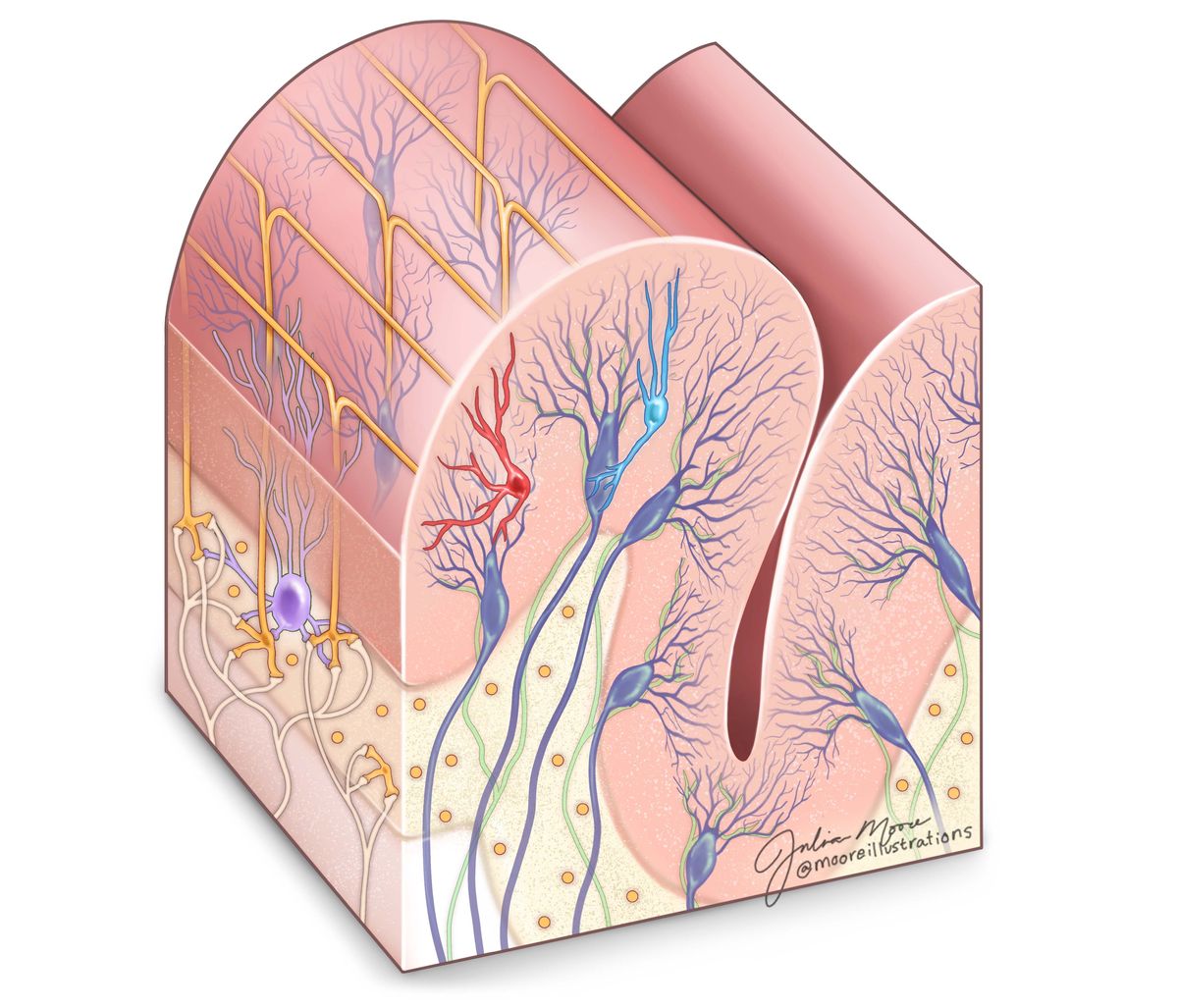 | The specific mechanisms behind the cerebellum’s multitude of functions remains a mystery, but the orderly arrangement of the neurons within the structure indicate that it may carry out a single computation—or set of computations—that it applies across its many roles. |
A prediction machine
Training a high-powered microscope on a slice of the cerebellum will reveal large, densely packed Purkinje cells arranged in an orderly, grid-like pattern. This unique architecture, which is much simpler and more uniform than that of the rest of the brain, led some researchers to propose that the cerebellum carries out a single computation—what Schmahmann calls the universal cerebellar transform—that is generally applied across its many functions, both motor and nonmotor. Jennifer Raymond, a neuroscientist at Stanford University, is one of many researchers who agree with this idea. Given how stereotyped the architecture is, she says, there must be some specific computation or set of computations that this anatomy is good for.
It seems like the more places we look, the more functions are found.
—Sam Wang, Princeton University
The nature of this computation or set of computations remains an open question. One of the leading hypotheses for what the cerebellum’s overarching job might be is to act as a prediction machine. “The simplest level of that is that it predicts the sensory consequences of a motor command,” Hausser says, allowing the brain to disregard expected signals that result from the body’s movements. Such predictions could also be applied to more-complex processes, including predicting the consequences of your behavior during social interactions, he adds. This may be where reward processing comes in, Stoodley speculates—the cerebellum might be using this information to make and update predictions. It might be through this process, she adds, that the cerebellum coordinates both movements and cognitive or other nonmotor functions to occur in a flexible and accurate way.
Debate remains, however, over whether there really is just one computation happening across the entire cerebellum. Stoodley suspects that the computations are similar in both motor and nonmotor roles but that the timescale at which those computations occur differs.
In addition to better understanding how our brains work, solving the mysteries of the cerebellum may also benefit patients, say researchers who spoke with The Scientist. Several labs are already conducting early-stage clinical trials to test whether using methods such as transcranial magnetic stimulation (TMS) to noninvasively stimulate the cerebellum could help address the symptoms of conditions such as schizophrenia or autism. Because the circuit architecture in the cerebellum is relatively simple, it provides “the best chance of being able to go in with very specific circuit level manipulations to try to address neurological or psychiatric disorders,” Raymond says.
In the case of schizophrenia, researchers have shown that stimulating a specific cerebellar circuit with TMS can alleviate the “negative” symptoms of the disorder, such as the lack of motivation or the inability to feel pleasure, in a small sample of patients. Those findings are now being explored in a larger clinical trial. Roscoe Brady, a psychiatrist at the Beth Israel Deaconess Medical Center in Boston who was involved in that research, says that he and his colleagues now have evidence that stimulating another, distinct cerebellar circuit can also reduce hallucinations. In addition, the team has pinpointed a third circuit linked specifically to cognitive deficits, Brady adds. “Our plan for the future is to try and determine if that circuit can be modulated by TMS as well.”
With these advances, the cerebellum, which once took a back seat to the cerebral cortex, is drawing more interest from a wide range of scientists, says Stoodley. “I think it’s exciting. People outside of the little cerebellar world are starting to become more interested in the cerebellum.” As a result, more and more of the structure’s secrets are now being revealed. Late last year, for example, scientists discovered the cerebellum contributed to appetite control. “That kind of blew my mind,” Wang says. “It seems like the more places we look, the more functions are found.”
Diana Kwon is a freelance science journalist based in Berlin, Germany.

